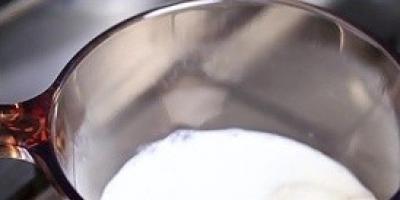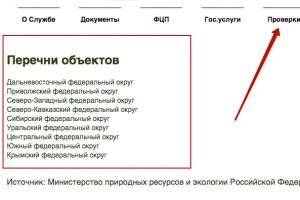What do we know from the history of the chronicle? The compass, known to us from school, is used to draw perfectly regular circles. The history of this instrument goes back thousands of years, as can be judged by the perfectly precise circles that archaeologists see on the surfaces of ancient structures. During excavations of the burial mounds of the ancient Gauls in France, an ordinary compass made of iron was found. And during the excavations of Pompeii, scientists were surprised to discover a slightly different tool; it had approximately the same purpose, but was very, very complicated.
As it turned out, it has changed little since the times of the Roman Empire; it is produced and used in the same form in the modern world, although now there is even a digital caliper. This term is of foreign origin and consists of the German word “krone” - crown and the Latin “circulus” - circle. Belongs to the category of drawing and measuring instruments. It has two legs, most often arched, between which you can set the desired angle using a micrometer screw, which is also included in the design of the instrument. The screw serves to allow you to adjust the desired distance between the legs. There is also a simplified version.

In the photo - for measuring the outer diameters and dimensions of parts.

Today, such a device is used in production to measure the outer diameters and dimensions of parts (one category of tools), as well as to determine the dimensions of the internal diameters of parts (other models of devices). In medicine, this instrument is also widely used in a variety of industries, but all its varieties are associated with microscopic elements, for example, in dentistry or neurosurgery.
According to the method of obtaining data, mechanical and electronic models are distinguished.
This instrument, as a measuring device, does not need verification, because it is not included in the state register. To compare the dimensions of parts of an object with standard dimensions, this type of caliper is used. So, having measured a part using such a specific method, the data obtained is compared with the data of the samples, from which conclusions are drawn.
Calipers are also very convenient in turning, especially for woodworkers - indeed, when turning decorative parts made of wood, exact dimensions are often not very important and a tool that allows you to quickly, on the go, estimate the size of a part or workpiece is popular. Calipers are especially convenient when turning identical parts, and every turner faces this task regularly. Having several of these tools greatly speeds things up - you can pre-set them to the main dimensions of the part and not be distracted by measuring with a ruler or caliper.
A simple caliper, like the one in the photo above, is not difficult to make yourself. It can be seen that the difficulty is only to select suitable material, then a little simple plumbing work.

In the drawing, calipers with a measuring diameter of up to 180 mm.
What was used in the work.
Tool.
Regular set metalworking tools, something for drilling holes. I used the simplest one sanding drum, installed in lathe on wood. I used a small angle grinder with a thin cutting disc and an electric sharpener. Stamps with numbers came in handy. You can't do without a steel plate or anvil.
Materials.
A piece of sheet steel of suitable thickness. I used stainless steel, 1.5 mm thick. It is desirable that the workpiece is smooth and without dents. Medium coarse sandpaper. A few hardware items.
So.
During the manufacture of the tool, several deviations from the drawing were made - the legs of the calipers were assumed to be of the same thickness, and instead of a rivet, a regular M6 screw was used. Practice has shown that two reinforced “body” washers and a stop washer allow the legs to move smoothly, with little effort. The tightening force of the nut can be adjusted.
The drawing of the caliper leg was printed on a printer on thick paper, adjusting the size to the required one. After cutting it out, I got a template. The outline of the leg can be transferred to the workpiece using carbon paper.

Everything possible was cut off with a grinder. The difficulty is cutting out the inner radius. It had to be cut out with a very small “remnant” of a cutting disc.

After rough cutting, I finished the outline on a sharpener and a magic file.

Here, again, there is an issue with the inner radius. I solved it by making a small grinding drum from a birch log with a radius slightly smaller than the inner radius of the caliper leg. Without removing it from the machine, I wrapped sanding paper around the block and secured the ends with adhesive tape.

After the legs' shape was completely finalized, holes for the hinge were drilled.

An M6 bolt of suitable length was selected, the legs were fastened with an improvised hinge. It turned out to be simple and quite functional; moreover, the force with which the legs move can be adjusted.
Can I recommend Alternative option production, more, hmm, classic - without dancing with an angle grinder. A series of holes with a diameter of 4...5 mm are drilled along the contour of the legs. Use a small chisel to cut jumpers between the holes. The same goes on.
The hardening of the working part of the legs has been omitted and when using the tool not only for pieces of wood, it would be better to do it:
- heat the working parts of the legs to a length of 20 mm until light cherry-red and cool through a layer of oil in water;
- straighten the legs of the caliper after hardening and clean them with abrasive sandpaper.
Some changes can be made to the described sequence of caliper manufacturing.
If the blanks for the legs small size and marking them geometrically is inconvenient, then to mark them, two templates are made from thin sheet steel: one for drawing lines on which the centers for auxiliary holes will need to be marked, and the second (smaller) for marking the contour of the leg. Previously, a template is applied, which is an outline. First, auxiliary lines are applied on the workpiece according to the first template, and then the main lines are applied according to the second template of smaller sizes. The latter is installed so that its contour lines are equally distant from the applied auxiliary contour lines for the centers of the auxiliary holes.
If the material for the caliper blank is strips of 25X4 or 30X4 mm, then straight lines are marked on them, reproducing the shape and length of the legs in an unbent form. Then the strip is cut off with a chisel on a plate or in a vice, retreating 0.5-1 mm from the marking line, and filed rough. After this, the leg is heated and bent with hammer blows on a round mandrel, the dimensions of which correspond to the bending radius of the legs.
The final processing of the calipers does not differ from the sequence given above.
With this method of manufacturing calipers, less time is spent, since there is no need to drill auxiliary holes along the contour of the workpiece. The latter method is used most often in the manufacture of a bore gauge, since bending the ends of its legs is very simple, while bending the legs of a caliper is a rather complex operation, requiring certain skills.
Caliper test and technical requirements to him. The test of a caliper consists of spreading and squeezing its legs. In this case, the movement in the hinge should be smooth, and the ends of the legs should meet tightly. The surfaces of the caliper must be clean, without scratches, nicks or dents, and sharp edges must be dull. The ends of the caliper legs must be hardened to a length of 20 mm to a hardness of HRC 40-50.
It remains to be said that the tool in the arsenal of a woodworker is in great demand. Practice has shown that it is better to have several pieces. I used a maximum of four at the same time.
Many homemade projects require circle markings. Their diameter varies greatly: from just a couple of centimeters to a meter or more. You can spend a lot of time finding suitable compasses. The old way marking with thread does not give top scores– the circles turn out crooked. The compass, which we propose to make with your own hands from scrap materials, is universal. With its help, you can easily draw a circle and you can also easily change its diameter.
Materials
Before starting work, prepare:
- meter threaded rod M10;
- washers, 4 pcs.;
- nuts M10, 4 pcs.;
- nut M12, 1 pc.;
- screw;
- epoxy adhesive.

Step 1. The needle for a homemade compass will be a screw. It needs to be attached using epoxy glue to one of the outer edges of the large nut. For ease of operation, you can clamp the nut itself in a vice. When gluing parts, do not rush. The self-tapping screw must be strictly perpendicular to the nut. It will take about 4 days for the glue to dry completely.

Step 2. Now you need to fix the resulting needle on the threaded rod. To do this, in the specified sequence, string on it:
- small nut;
- washer;
- nut with self-tapping screw;
- washer;
- small nut.
Tighten the parts so that the nut and washer structure is strong and secure and holds the improvised needle in the position you need.

Step 3. At the second end of the threaded rod, you should fasten a pencil according to the pattern already familiar to you. Place it between the washers and secure everything with nuts. The pencil itself must be hexagonal. Round pencils will not be held. This has already been verified.

All. The compass is ready. To use it, you need to measure the required length from the needle with a tape measure and twist the nuts with washers and a pencil to the designated point.
It was evening, there was something to do...
One day I got tired of drawing circles using the well-known “compass” type “plank with two nails”...
I decided to buy a compass - in the office supplies there are school "goat's legs" that cannot draw a large circle, at least 50 cm, and are also so flimsy that they bend during the process of drawing a circle (as schoolchildren draw something with them) ... I realized that this was not an option.
I looked on the websites of tool stores in my city - there are no compasses (no compasses...). But I found a couple of Moscow online stores where they offered me to buy a good compass for 3500-4000 rubles. :wacko: Why is this necessary??? - I thought.
And I decided to make a compass with my own hands. By the way, the manufacturing process took only one evening.
Compass materials
For the compass I used:
- square profile pipe - 15mm;
- M8 bolts with nuts and washers;
- M6 bolts with nuts and washers;
- printer shaft with a diameter of 3mm (any hardened rod will do).
Assembling a compass with your own hands
Also check out these articles
I cut two pieces of pipe, the length is at your discretion, at least 1 meter each, I used 30cm. It all depends on what kind of circles you draw...
The edges of the profile are cut off, as shown in the photo below, in order to insert the bolts for securing the needles. Those. 3 of the four sides are cut off from the profile so that a plate remains for drilling for the needle fastening bolts.
And for the upper part - 6mm, because... M6 bolts are used there.
The top bracket can be made from sheet steel 1mm thick.
A 6mm hole is drilled at the top of the bracket and an M6 bolt with two nuts is inserted there - this is a handle for convenient rotation of the compass (see photo at the bottom of the article).
Wing nuts are placed on the bolts that hold the legs in the bracket to make it convenient to fix the position of the compass legs.
The lower M8 bolts are clamped in a vice, a small notch is made on the threads, close to the bolt head, with a round file - this will make them easier to drill, then a 3mm hole is marked and drilled for inserting a needle
It is better to grind off the bolt heads by half so that the legs of the compass can touch as closely as possible.
And also, after inserting the needle, it is better to place a washer under the nut, otherwise the nut will rotate very poorly on the needle.
For the needles, two pieces of the shaft from an old printer were used - a hardened rod with a diameter of 3 mm.
As a result, in an evening of work (another evening I disassembled it and painted it), I got an excellent compass with great advantages and small disadvantages.
About the shortcomings of my compass
- the legs of the compass do not compress completely due to the heads of the bolts, the needles do not close to zero, about 1 cm remains, i.e. The compass cannot draw very small circles, less than 1cm. This can be solved by increasing the width of the upper bracket so that the legs of the compass are attached at a greater distance from each other, but for myself I decided that I did not need circles less than 1 cm in diameter;
- thickness profile pipe was not very well chosen, because it only includes an M8 bolt (if you use an M10 bolt, there will already be 2.5 mm left to the edges of the profile), in which you have to drill a 3 mm hole and when you tighten the nuts too hard, the bolt breaks in a thin place. I recommend using a 20 mm profile, into which you can safely insert an M10 bolt, which will increase the strength of the needles. But in my case, the tightening force is enough for the bolts to hold; one needle fastening bolt broke only when I decided to tighten it quite tightly with 2 wrenches: unsure:
- This compass can only be drawn with needles and not with a pencil, but for marking circles on wood and sheet steel it is much more convenient to use a needle (the result is a thin and precise line that is clearly visible) rather than a pencil. If desired, you can make devices for attaching a pencil to this compass.
Otherwise, the compass turned out great and is already helping me in my work. It is possible that in the future I will make a compass version 2.0, where I will take into account all the shortcomings of the first version.
Update
Following the advice of experienced people from the wonderful forum chipmaker.ru, the compass was modified - the legs were rotated 90 degrees, so that the heads of the bolts no longer touch, and the needles can be set at an angle - this is very convenient when drawing large circles. Thanks for the advice!
The last two photos show the already modified compass.
DIY compass photo:




In carpentry and carpentry, sometimes it becomes necessary to draw large circles. This can happen when cutting round furniture pieces, such as tabletops, from joiner's board or sheet material. I mean reveal round blanks from chipboard, chipboard, plywood, MDF. And in the construction business, when creating a design, figures are also cut out of plasterboard. For such markings, a large carpenter's compass is required, but this may not be enough for the radius.
The fact is that the radius of a classic compass is limited by the length of the legs. And if you need to mark a circle with a large radius, for example about a meter, then a standard tool will not help. For such work, you can make a device using parts that are likely to be found in any home workshop.
The main part of the tool is a wooden rod, the length can be taken about 1 meter. For most jobs this is enough, but choose the size you need. Kernel would be better suited round, cross section 20 mm. . By the way, a thin handle for a light garden tool is well suited as a workpiece.
When choosing a diameter, you should immediately think about another important detail. A plastic tube will be placed on the rod, and its internal diameter should be slightly larger than the outer diameter of the rod.

We drill a hole on one side of the rod, the diameter is selected according to the diameter of the pencil. After this, we saw through the part with a hacksaw from the end together with the hole. We drill another hole across the cut for a clamping bolt with a wing. A working pencil will be clamped into this device.
Now we cut a piece of plastic tube 100-150 mm long. , pierce with an awl or drill a hole through the tube in the center. Then we insert a thin nail into one hole from the inside, and widen the other and screw a clamping bolt into it. By the way, it is better to choose a nail with a large flat head, so it will be more rigid.

We assemble all the parts of the compass together, insert a pencil into the split end of the rod and clamp it with a thumb. From the other end we put on a tube with a central axis and tighten it with a clamping bolt. We set the desired radius of the circle, the distance between the end of the pencil and the central axis and tighten the clamping bolt on the tube. This bolt will simultaneously press the head of the nail - the axis of the compass. Just don't pull it too hard, it will come off quickly.
By the way, if you need to draw a circle somewhere on a construction site, but there is no time to look for suitable parts, then you can use a simplified version of a compass. We take a thin long strip and tape a pencil to one end. We measure the required radius and nail a thin, sharp nail; it should go through the slats and become the central axis. I think it’s clear that the point of the nail and the sharpened end of the pencil should be on the same side of the rail. There is one inconvenience here: to accurately mark, sometimes you have to pull out and break the nail several times, but in general you can work.
Topic from the site http://ostmaster.blogspot.ru/2012/10/blog-post_14.html
Quite often, a large compass is needed to work with curved wood and laminate workpieces. It is used when it is necessary to cut circles or semicircles of large diameter, as well as in the manufacture of arched structures. Conventional compasses, even with the use of attachments, cannot provide such large diameter circle, and even large carpenter's compasses do not always cope. To solve this problem, you can make your own simple device for forming circles of large diameter.
The design of such a homemade compass is very simple, and anyone can make such a device. A round wooden rod 1-1.2 meters long is used as a base. The diameter of this rod can be any, but the best option the size will be 20-25 mm. With a larger rod thickness homemade compass It will turn out too heavy and it will be inconvenient for work. These round rods can be purchased at woodworking stores, or you can simply go to the market and buy a thin stem for gardening tools.
A hole with a diameter approximately the size of a regular pencil is drilled at one end of the wooden rod. Then a hacksaw is used to cut the rod along its axis. After this, you need to drill another hole (across the cut) to attach the pencil. A bolt with a nut is threaded into this hole (it is better to take a clamping bolt, which has a convenient wing for tightening and unscrewing). If you use a simple nut to clamp a pencil, you will need to use a wrench.
Then they take plastic pipe suitable diameter (you can take a piece of pipe for hot water supply or heating). Its diameter is selected to match the selected wooden rod, and the length can be within 10-15 centimeters. Two holes are drilled in this tube using a drill, a nail is inserted into one of them from inside the tube, and a clamping bolt is screwed into the second.
Now you can start assembling the compass. In the part that will describe the circle, insert a pencil into the intended hole, and screw a clamping bolt into the hole through the cut and use it to tighten the cut.
From the second end of the rod, a plastic cylinder with an inserted nail is put on it, which will act as the axis of a homemade compass.
The way to use a compass is to set the required radius and fix the tube together with the nail-axis with the top bolt. If the diameters of the wooden rod and tube are successfully selected, when clamping the tube, the nail head will also be tightened. It is important not to overdo it when tightening the bolt; just tighten it a little by hand.








